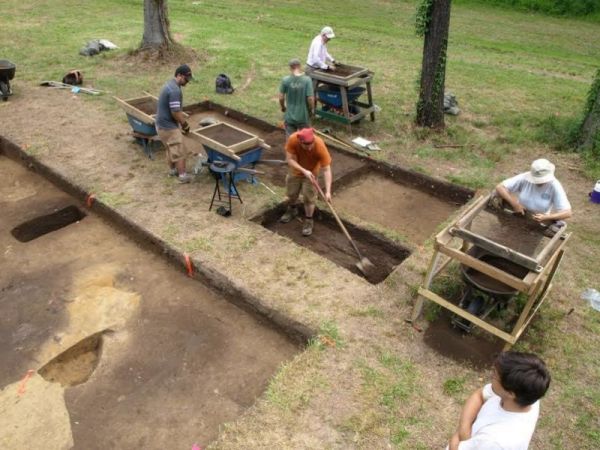An article at Gizmodo tells about the dig, plus the history of the Roanoke Colony, some new findings about why the colony was evacuated, and more about the motives for settling in that inhospitable spot in the first place.It’s here that archaeologists from First Colony have been digging for the past two years. In August, the foundation announced that it had found remarkable archaeological evidence of 16th century Europeans at Site X. Among more than 30 artifacts recovered here (including artifacts like nails and ceramics from both Indian and European sources that date from well after the Roanoke era) they found shards of a type of ceramics called Surrey-Hampshire Border ware. These helped researchers pin a date on the site.
Border ware, as it’s often called, was common among settlers of the Virginia company. But when the company failed in 1624, no new colonists were bringing the stuff to the area. Thus, finding it at Site X is a pretty good indication that at least some of the artifacts found dated from the time of the Roanoke colonists.
Welcome to ...
The place where the world comes together in honesty and mirth.
Windmills Tilted, Scared Cows Butchered, Lies Skewered on the Lance of Reality ... or something to that effect.
Windmills Tilted, Scared Cows Butchered, Lies Skewered on the Lance of Reality ... or something to that effect.
Saturday, September 26, 2015
New Discoveries Could Explain What Happened to the Lost Colony of Roanoke
A couple of years ago, we told you about a new clue in the mystery of Roanoke Island.
That’s where a group of English colonists settled in 1587 and
disappeared without a trace sometime before 1590. A previously-unseen
mark on a 1585 map led investigators to think that the “Lost Colony” may
have moved 60 miles inland. An archaeological dig at the spot has since
revealed some intriguing relics.
Subscribe to:
Post Comments (Atom)


No comments:
Post a Comment